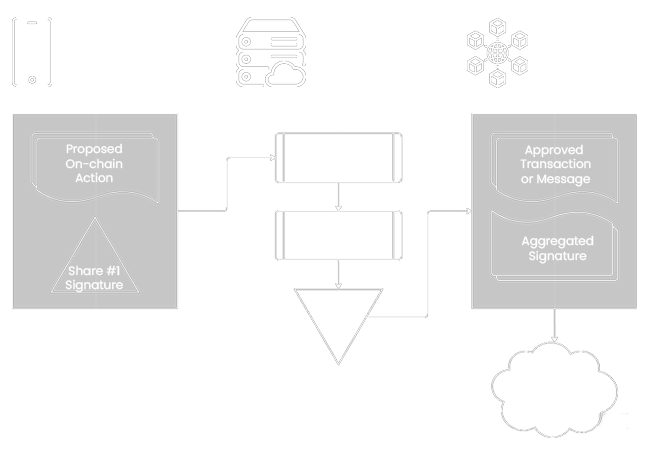Forming Signatures with INTU
An INTU account uses Threshold Signatures to sign messages and transactions for on-chain interactions. These signatures require a minimum number of participants, defined at account creation, or the most recent resharing.
Generally speaking, the signature formation process follows these steps:

-
Any participant forms a valid blockchain message or signature, provides a partial signature using their keyshare, and broadcasts it to the INTU smart contract system
-
Co-Signers, or other end-user factors listen for the proposal on-chain. Once the proposal has been posted, they recover it
-
The proposal is then reviewed and verified by the co-signer/other factors. If valid and authorized, the other factors contribute partial signatures for that specific transaction/message
-
Once the minimum threshold has been reached, any participant can aggregate the partial signatures into a valid EVM signature, and broadcast the transaction to the blockchain network directly.
It is important to note that the network or channel of communication used for signature formation does not necessarily need to be the destination network of the transaction. For example, a private communication channel can be utilizied to then form a transaction for an EVM compatible chain, such as Arbitrum. This is the simplest means of achieving broad cross-chain compatibility. More info on cross-chain
This also contributes to enabling a “gasless” experience for end-users. By using a gasless network, or paymaster services, an application can optimize costs for orchestrating the signature formation, and then directly pay for gas on the target network on behalf of the end-user.